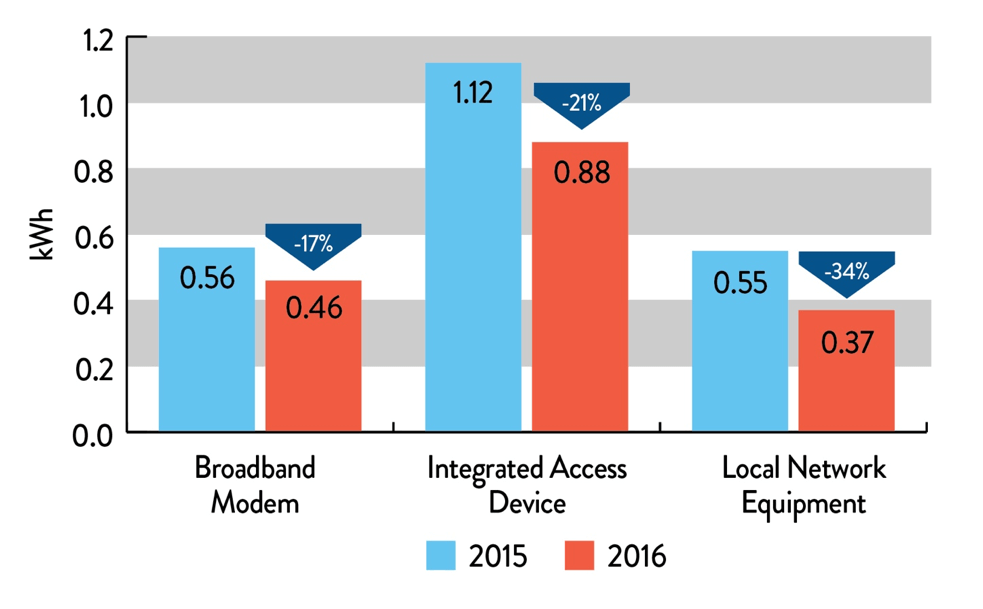Energy
Savin’ Some Rosenfelds

Have you ever heard of a Rosenfeld? The Rosenfeld metric was created in 2010 and named after Art Rosenfeld, a former Lawrence Berkeley National Laboratory Scientist and former California Energy Commissioner known as “the godfather of energy efficiency”. It is a unit of energy savings representing 3 billion kilowatt-hours per year, which is also equivalent to the amount of energy generated by one 500-megawatt coal-run power plant. Why is this important? It is a term that is often used to quantify the savings related to energy efficiency initiatives.

Art Rosenfeld in his Berkeley Lab Office in 1989 (credit: Lawrence Berkeley National Laboratory)
I was first introduced to the Rosenfeld in 2011 when the Natural Resources Defense Council estimated that the pay-TV industry could save 3 Rosenfelds of energy annually by 2016 through the adoption of energy-saving technologies and practices. Shortly thereafter, the U.S. Department of Energy (DOE) opened a proceeding to consider the development of energy regulations for set-top boxes (STB), but by law, DOE energy standards cannot take effect for five years after adoption. To achieve faster savings, the pay-TV industry and NRDC (along with the American Council for an Energy-Efficient Economy (ACEEE)) established a non-regulatory “Voluntary Agreement (VA)” in which all of the country’s largest pay-TV providers committed to the purchase of energy-efficient devices beginning in 2014.
The DOE was so satisfied with this agreement that it closed its proceeding. The Secretary of Energy at the time, Ernest Moniz, explained that the VA’s “energy efficiency standards reflect a collaborative approach among the Energy Department, the pay-TV industry and energy efficiency groups – building on more than three decades of common-sense efficiency standards that are saving American families and businesses hundreds of billions of dollars.”
I’m happy to report that in 2016, the VA saved approximately 33% more energy than NRDC had hoped for in 2011 - a savings of nearly 4 Rosenfelds! The 2016 Annual Report for the STB VA released earlier this month found that set-top boxes in 2016 used just over 8 Rosenfelds, compared to the 9 Rosenfelds that NRDC set as a goal for 2016 in its earlier report and the 12 Rosenfelds that NRDC had projected would be consumed in 2016 absent immediate regulation. The VA has therefore not only succeeded in delivering energy savings far faster than DOE regulation could have, but it has actually resulted in savings that greatly exceeded the expectations of the leading energy-efficiency advocates. And because the savings under the VA are expected to increase even more under its more rigorous “Tier 2” standards that became effective in 2017, the best is yet to come.
As stated in the most recent annual report, this program has been extremely successful in reducing the energy consumption of STBs and reducing the number of power plants required in the United States. Over the four years the signatories have been reporting, it is estimated that the program has saved 16.8 TWh of energy, saved consumers 2.1 Billion dollars in energy costs, and avoided 11.8 million metric tons of CO2 emissions.
The STB VA was established in 2012 as a five-year program, and 2017 is the last year for commitments with a final report in 2018. The VA signatories, including the energy efficiency advocates NRDC and ACEEE, are actively working on a renewal of the Voluntary Agreement to keep the momentum of this successful program going.
That’s great news for set-top boxes, but what about cable modems and routers?
There is also a Voluntary Agreement for Small Network Equipment (SNE) energy efficiency that was established in 2015, and 2016 was the first year that the signatories had to meet the commitment that 90% of their purchases or retail sales would be within the power limits established by the VA. The Annual Report for the SNE VA was just released this week, and it demonstrated progress as well. It found that 98.3% of the devices reported met the required levels, up from 89.6% last year. In addition, ten of the eleven signatories met the 90% commitment, and the eleventh fell just short at 88%. As per the VA, that signatory is working on a remediation plan to offset the incremental energy associated with its devices that exceeded its commitment.
Small Network Equipment has been evolving at a rapid pace, increasing network speeds from the Service Provider to the home, and also increasing networking capability within the home. Many of the newer SNE products integrate multiple functionalities that had been supported by separate devices, including broadband modem functionality, high-powered WiFi, MoCA, multi-port routing, and even IoT controllers. In spite of this evolution, the energy consumption of the devices has decreased relative to broadband speeds, as depicted in this chart taken from the annual report:

Energy Usage by Equipment Type, Weighted by Broadband Speed
These trends demonstrate that the service providers and manufacturers are making energy-conscious decisions in their design and purchasing decisions, and saving Rosenfelds in the process!
You can learn more about the Voluntary Agreements here, and on the CableLabs site here.
--
Debbie Fitzgerald is a Principal Architect in the Technology Policy Department and leads the Energy Efficiency Program at CableLabs.

